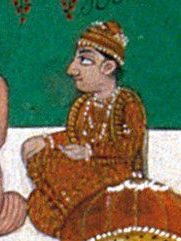JAGIASI, also Jagiasu or Jijnasu is a religious sect cognate with the Udasi section of the Nanakpanthis of Sindh. The word jagiasa is derived from Sanskrit jijaasa (desire to know), jagiasi denoting one desirous of knowledge, of spiritual insight. The members of the Jagiasi sect are mostly sahajdharis i.e. gradualists, believing in the Gurus and following generally the Sikh tenets but not yet sworn as full members of the community. There arc however some who accept the rites of Khalsa initiation and wear long hair while some others add the suffix `Singh` to their names. Following the example of the founder of the sect, Baba Sri Chand, the elder son of Guru Nanak, the Udasts do not marry.
The Jagiasis on the other hand follow the example of the younger son of Guru Nanak, Lakhmi Chand, who was a householder, and take to family life. The sect flourished especially during the days of Baba Gurupat, known to be a descendant of Guru Nanak. He visited Sindh during Sikh times with a letter from Maharaja Ranjit Singh to the local chief, Mir Sohrab Khan. Baba Gurupat established many Jagiasa tikanas or seats in Sindh, including those at Khairpur, Hyderabad, Halani and Kandyaro. His last will, dated 29 July 1857, bears the signatures of many a Sindhi Jagiasi and Udasi saints. The Jagiasis recite hymns from the Guru Granth Sahib which they venerate as much as any devout Sikh and, like Sikhs, reject idolatry. But they perform several Hindu rituals as well and they do not undergo Sikh baptismal ceremony,
Jagiasi, also known as Jagiasu or Jijnasu (from the Sanskrit word jijñāsā meaning “desire to know”), was a sister-sect to the Udasis, with the differences being that whilst the Udasi trace their origin to Sri Chand, Guru Nanak’s eldest son, the Jagiasu claim to have been founded by Lakhmi Das, the younger son of Guru Nanak. Another difference is while the Udasis follow a lifestyle of celibacy and asceticism, following in the footsteps of their founder, who was a recluse, the Jagiasu on the other hand promote and live the life of a householder, known as grist marg. The sect was prevalent during the period of Baba Gurupat (also known as Bawa Gurpat Saheb), who was a 12th generation descendant of Guru Nanak. Baba Gurupat conducted missionary works in Sindh and founded many Jagiasu tikanas (seats; a term for a place of worship in many Sikh sects) in the region, specifically in Khairpur, Hyderabad, Halani, and Kandyaro. Whilst they venerate the Guru Granth Sahib, they tend to forgo the Amrit Sanskar baptism ceremony to become initiated Khalsa but a few of them are Khalsas. Furthermore, their beliefs and practices show tinges of religious syncretism with Hinduism. They maintain a close relationship with and similarities to their sibling sect, the Udasis.



